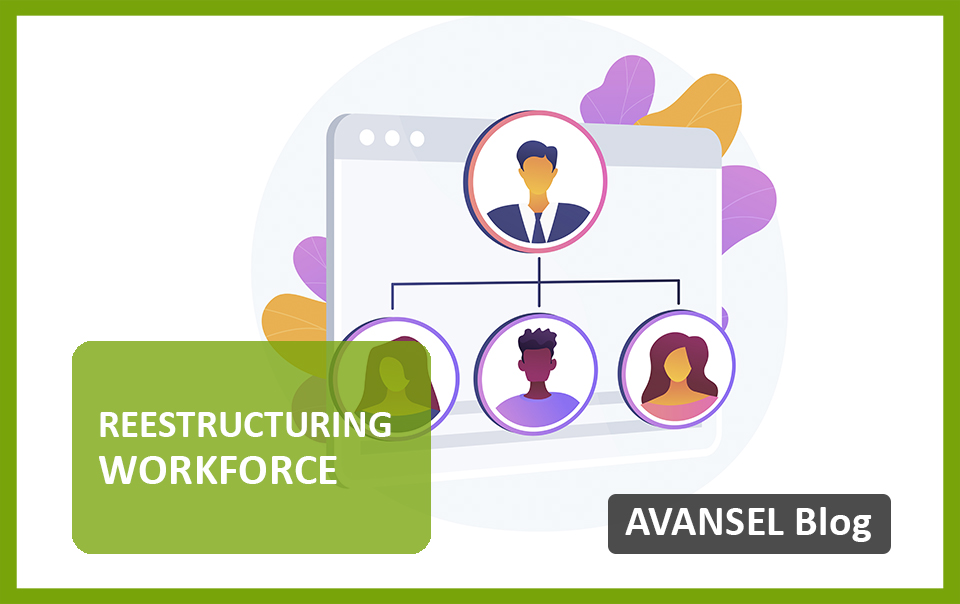How to carry out a restructuring of the workforce in a company?
A restructuring of the workforce may seem like something simple – an exercise to see if there is someone who may be better suited in another role, or if a person has a lot of work, assigning them an assistant. However, this can be a tremendous mistake if we only concern ourselves with the production aspects, without thinking about the human factor, without thinking about people.
What is a workforce restructuring?
Restructuring of a company’s workforce is the process through which the structure of the company is modified with the aim of improving one or more aspects, such as efficiency or productivity.
A restructuring of the workforce can be done by departments or individually, maybe we have detected that it’s an entire department or just a specific person needs a change. This can result in the merger of departments or the creation of new positions.
However, this restructuring can be a delicate process for a company. The restructuring must be carried out, firstly, with an analysis of the current structure and, secondly, with a clear plan of what we seek to achieve. In this way, we can minimize the possible negative aspects and enhance the positive ones.
What mistakes can be made during a restructuring?
When facing a restructuring of the workforce, we must always keep in mind that we are dealing with people and not with parts of a machine. It may seem like a somewhat risky comparison, but, unintentionally, many times you can make the mistake of assigning tasks or positions to some people because you see potential without talking to them first.
For example, we may have a very good accountant who we see as having the ability to manage a team and we want to promote him to head of the department. However we must take into account that this employee may not want to pursue management experience, even if we see that he can do it.
Another of the possible errors when carrying out a restructuring is poor communication. As much as we do prior analysis and planning, if we do not communicate those changes properly, we can create internal conflicts or a bad work environment.
It is necessary that we explain why these changes are occurring, what the objectives are and that we communicate it to all of the people who make up the company, even if they are not affected by those changes. If from one day to the next several unexplained changes occur, uncertainty and confusion are created and will affect the working environment of our company.
When we carry out important changes in our company, we must keep track of how this new situation is going. Failing to do this can be considered another mistake in this process – we must consciously keep track of how the situation is evolving, if people are happy with the change and, if so, if that change is noticeable. Some modifications will require more time than others to have an effect, which we must also take into account.
How do we do it?
Every company is different so changes made can have a higher or lower impact, depending on the status quo. However, today we are going to give some general guidelines on how a company’s workforce could be restructured while keeping in mind that each company is a different world, so different solutions or procedures can be applied.
Situational analysis
Before making changes, we have to know where we are. And it’s not just about knowing how many people there are in each department and how many departments we have in total. We must see what people there are, in what positions, what are the real functions they have in their day to day, if they are happy with what they do or if they would like to continue growing.
Design an action plan
Once we know what we have, what the people on our team would like to do, and how far we can go with the changes, it’s time to design an action plan to carry it out. The first point of this action plan is to set our objectives and, secondly, to establish the steps and deadlines that we must follow.
It is important that this planning is adjusted to reality and that it specifies what we need. For example, if we need to create an accounting department that differs from the administrative department, we must consider if we can do it with the people we already have, if there will be levels within that department and if we need to bring in any new resources. Perhaps at first, we think that we will need to hire some new staff but after a few months we realize that this is not the case, this is why having deadlines and a time between changes is important.
Communication and implementation
Communicating the changes that are going to be made and the reasons that have led to them is equally important. In this way, we will avoid the bad working environment that misinformation can create. After this, we can begin to implement the changes that we have proposed in our action plan.
Monitoring and evaluation of the restructuring
When we have everything up and running and some of the early deadlines are being met, it is time to monitor the situation and assess how it is affecting the company. It is true that some changes need more time than others, but we must see if the situation is taking the course we had set, in case any adjustments have to be made. In the same way, talking to the people on our team to find out how they are handling this new situation and if they feel comfortable with it is as important as all of the above.
In short, if we want to restructure the workforce in our company, we must consider the human factor, we must take people management into account. It is just as important to set objectives as it is to ask our team what they think, how they would like to develop professionally or if they think that there is duplication of functions in their position. Aspects like these are what make the difference in a good restructuring of a workforce and in good people management, and will hopefully lead to having a more motivated and invested team with the company.





